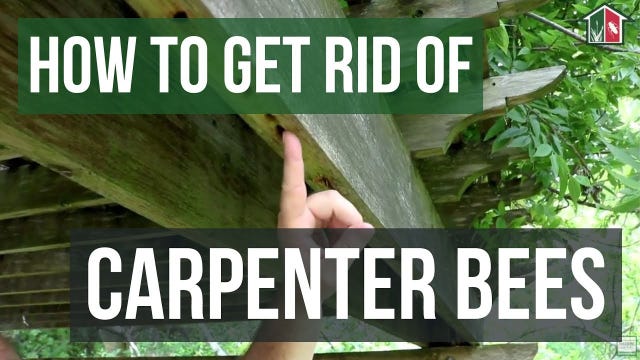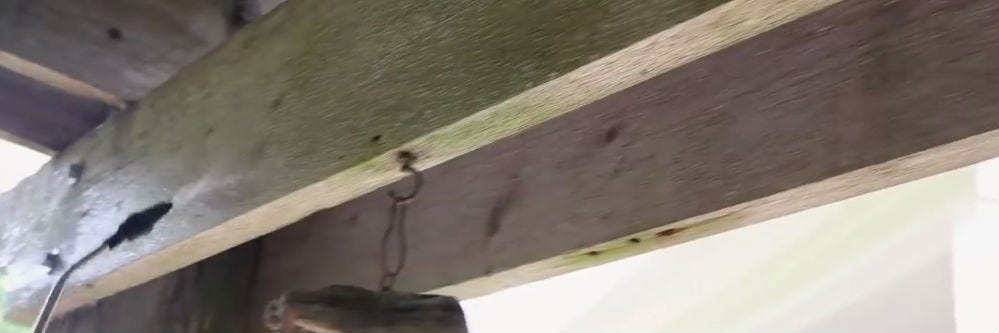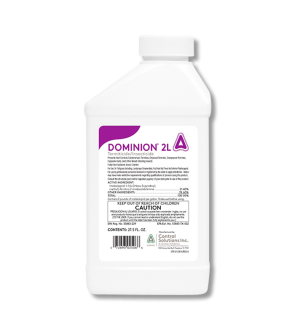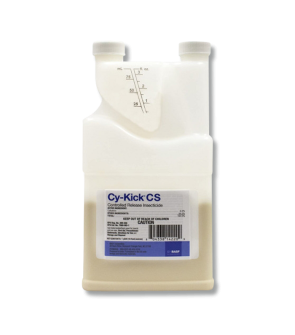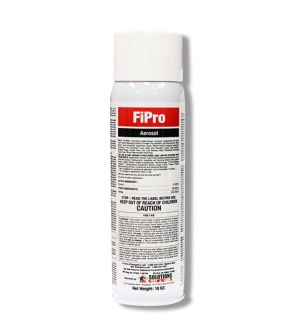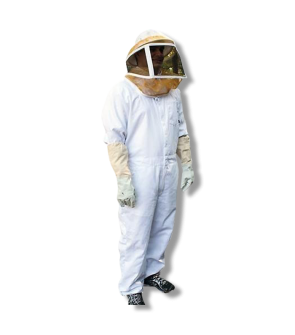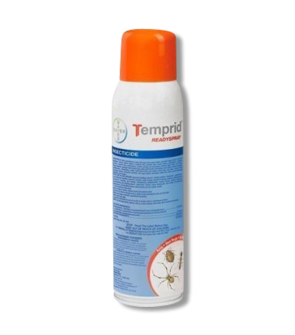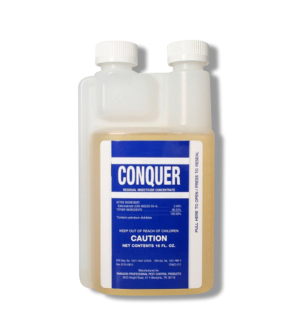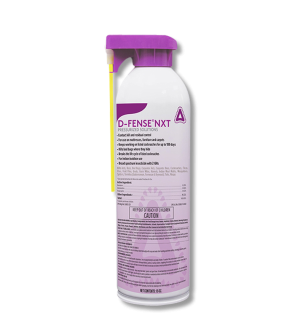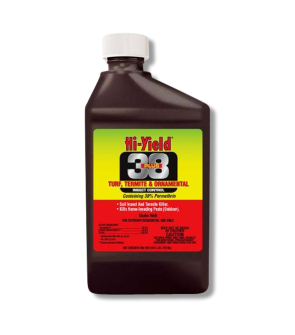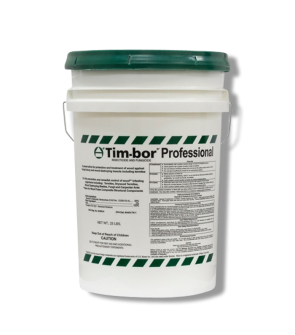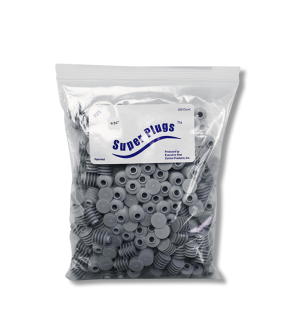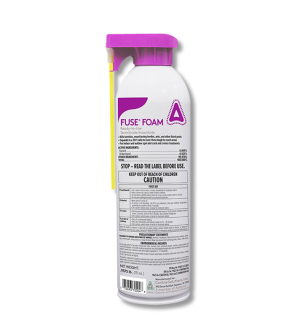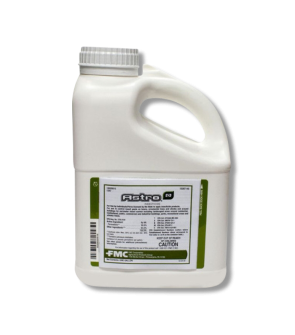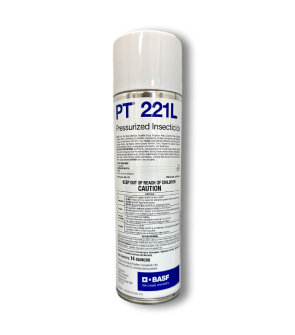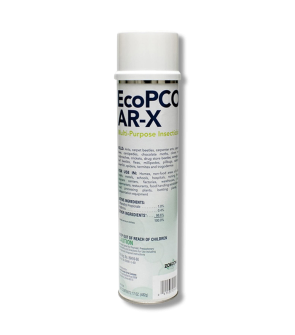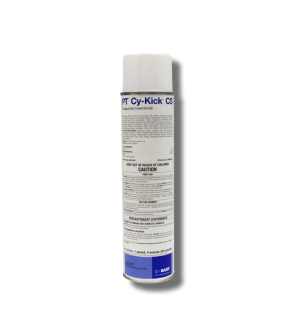Gain access to personalized product screening, the best pricing, rewards, and more!
Most Effective Products
Carpenter Bee Control: How to Get Rid of Carpenter Bees
Have you noticed holes in the wood on your property? Whether in your fences or siding, drilled holes may be the work of large-sized carpenter bees. Carpenter bees are perhaps the most troublesome because of the damage they can cause to wood.
Often confused with bumblebees, carpenter bees are roughly the same size and color but are not as fuzzy. Female carpenter bees can drill into wood and lay eggs. The holes they create in homes can be a problem that can lead to other insects using them to access your home.
There are over 500 different species of carpenter bees. Unlike other types of bees, like the honey bee and bumble bee, the carpenter bee is a solitary creature that prefers to be left alone rather than coexist in large colonies. They are called “carpenter bees” because they tend to build their nests in some type of wood.
This nuisance pest is unwelcome to homeowners and, if left untreated, can be damaging, especially to the wood elements of your home. If you have a carpenter bee problem on your property, worry no more. Our DIY carpenter bee treatment guide will show you exactly how to kill a carpenter bee infestation quickly and affordably.
Identification

Identification is an important part of control as you must determine whether the bee you see is a carpenter bee or one of the more beneficial bees that shouldn't be harmed. Careless identification can lead to wrong treatment methods, costing you time and money. Here are some key traits to watch out for:
- Carpenter bees resemble bumblebees in that they are larger than smaller honeybees. While bumblebees have more yellow on their abdomen, carpenter bees have a more shiny black color dominating their abdomen on the back section.
- The main difference is that bumblebees have hairy bodies, while carpenter bees are hairless and shiny.
- Another characteristic that helps you identify carpenter bees is that they burrow in wood while bumblebees burrow in the ground.
- Carpenter bees burrow and chip off wood to create a tunnel for their colony. Carpenter bees can damage and stain furniture, wooden panels of doors, windows, buildings, and fences.
- Carpenter bees prefer damp, moist outdoor nest areas with a queen, like any other insect colony. Unlike the male carpenter bees, the female bees can sting upon being provoked.
Use the description and image above to help you identify carpenter bees on your property. If you are having trouble, reach out to us, and one of our pest control experts will help you properly identify the pest and offer product recommendations for control.
Inspection

Once you have confirmed that you are dealing with carpenter bees, you can move forward with an inspection to determine where they are found. This will help you determine where to focus your treatment applications.
Where To Inspect
Carpenter bees are most active in the spring and fall seasons, and they can give off signs of their presence fairly easily with the conspicuous damage of drilling holes into wooden elements, usually around the home's exterior. Carpenter Bees can also burrow into patio wood or wooden furniture out on your patio.
What To Look For
It would be best to look for active carpenter bees or signs of their activity. Keep an eye out for holes made in wood siding, railings, fencing, and other wooden elements. The holes carpenter bees drill are about a half-inch in diameter. If you were to take apart and observe a damaged piece of wood from the side, you might notice a sharp 90-degree turn after the hole is made to create a gallery to lay eggs and to bring nectar and pollen for the eggs.
Other signs include yellow fecal stains on wood and sawdust (frass).
Treatment
Before handling chemicals, ensure you have the proper personal protective equipment (PPE), such as gloves, goggles, and a protective mask. If you want to be safer when treating carpenter bees, wear a professional bee suit so you won't have to worry about being stung.
Our top recommendation for controlling carpenter bees is Fipro Foaming Aerosol. This aerosol contains fipronil, which is lethal to carpenter bees. The foaming aspect helps to get great coverage and reach bees that are burrowed deep in the burrowed holes.
Step 1: Treat with Fipro Foaming Aerosol.
When released, Fipro Aerosol rapidly expands, generating dry foam with an expansion ratio of approximately 30:1. One ounce of the product is dispensed in a five-second burst, producing approximately one quart of foam.
When applying Fipro Foaming Aerosol, it is recommended that you begin spraying areas where carpenter bees have drilled their holes and made galleries.
Shake the can well and place the straw injector tip on the end of the dispenser. Holding the injector in place, direct the end to the carpenter bee holes you have located and apply, holding for about 8 seconds to allow the product within the injector tube to dispense into the treatment area.
Spray any other area susceptible to infestations, such as eaves, railings, posts, etc. We recommend spraying once a month during the active carpenter bee season.
Step 2: Seal Holes With Wood Putty
Once the galleries have been treated, use wood putty to seal the holes and prevent re-infestation. Carpenter bees can sting you during treatment, so we recommend exercising the proper precautions to ensure the highest level of safety.
How To Naturally Get Rid of Carpenter Bees
If you wish not to use chemicals for carpenter bee prevention, there are some natural preventative options you can use below:
Spraying citrus scent on the Carpenter Bees
Use any kind of citrus fruit, such as oranges, lemons, grapefruit, and lime. Squeeze out the juice or use the peels of the fruit and put it in a pot of water. Allow it to boil for a while. Pour the citrus solution into a spray bottle and sprinkle the citrus aroma all over the place. The refreshing smell of the citrus fruits leaves an ethereal smell in the house while repelling the bees away. The insect cannot stand the fragrance of citrus fruits.
Brewing garlic, oil and vinegar
Add a few cloves of garlic to a bowl or jar of cooking oil for a few days. Then, add some white vinegar to the bowl. Make sure the white vinegar is more acidic. Spray the solution around the tunnels and check it regularly. If you still spot a few carpenter bees, keep applying until all of the carpenter bees have been driven away.
Apply garlic powder directly to the carpenter's bee holes to eradicate the insects. This method is more effective.
Using Borate and Wood Preservatives
If the area is unpainted or unfinished, consider applying a long-term solution for your carpenter bee products with Tim-Bor Professional Insecticide. Tim-Bor Professional Insecticide is applied directly to the wood, acts as a repellent, and makes the wood indigestible to bees and other wood-destroying insects.
Prevention
Once the infested wood has been treated, we recommend carrying out some preventative measures. Some preventative techniques you can take to prevent carpenter bees are shown below:
- Use an insecticide concentrate such as Dominion 2L. Dominion 2L is a systemic insecticide that can be used to treat a variety of problematic insects, including carpenter bees. You can mix Dominion at a rate of 0.3 to 0.6 fl. oz. per gallon, depending on the level of infestation. Fill a handheld sprayer halfway with water, add the Dominion 2L, and then add the remaining water needed. Close the sprayer lid and agitate the sprayer to ensure the product is well-mixed. Spray the Dominion 2L on the wood and spray it to the point that the wood is wet. You could also spray where they made gallery entrance holes. For best results, this preventative application should be done at least two or three times during the peak carpenter bee season, from early spring to early summer.
Key Takeaways
What Are Carpenter Bees?
- Carpenter bees are a problematic species due to their habit of drilling holes into wood, especially wood that makes up the structure of a home.
- Carpenter bees can be confused in appearance with bumblebees but can be differentiated by their hairless and shiny bodies, while bumblebees are very hairy. Another difference is that carpenter bees nest in burrowed wood, while bumblebees nest in the ground.
How To Get Rid of Carpenter Bees
- Our top recommendation for treating carpenter bees is Fipro Foaming Aerosol. Locate the burrowed carpenter bee holes and spray the product directly into the holes. You can then seal the holes with wood putty.
Preventing Carpenter Bee Reinfestation
- Prevent future potential infestations of carpenter bees with a preventative treatment of Dominion 2L. Mix the Dominion 2L in a handheld pump sprayer at a rate of 0.3 to 0.6 fl. oz. per gallon of water and treat wood that has been damaged or you suspect carpenter bees may target.
- Alternative natural carpenter bee prevention methods include using citrus scent in areas where carpenter bees have been active or treating wood with Tim-Bor Professional Insecticide.






